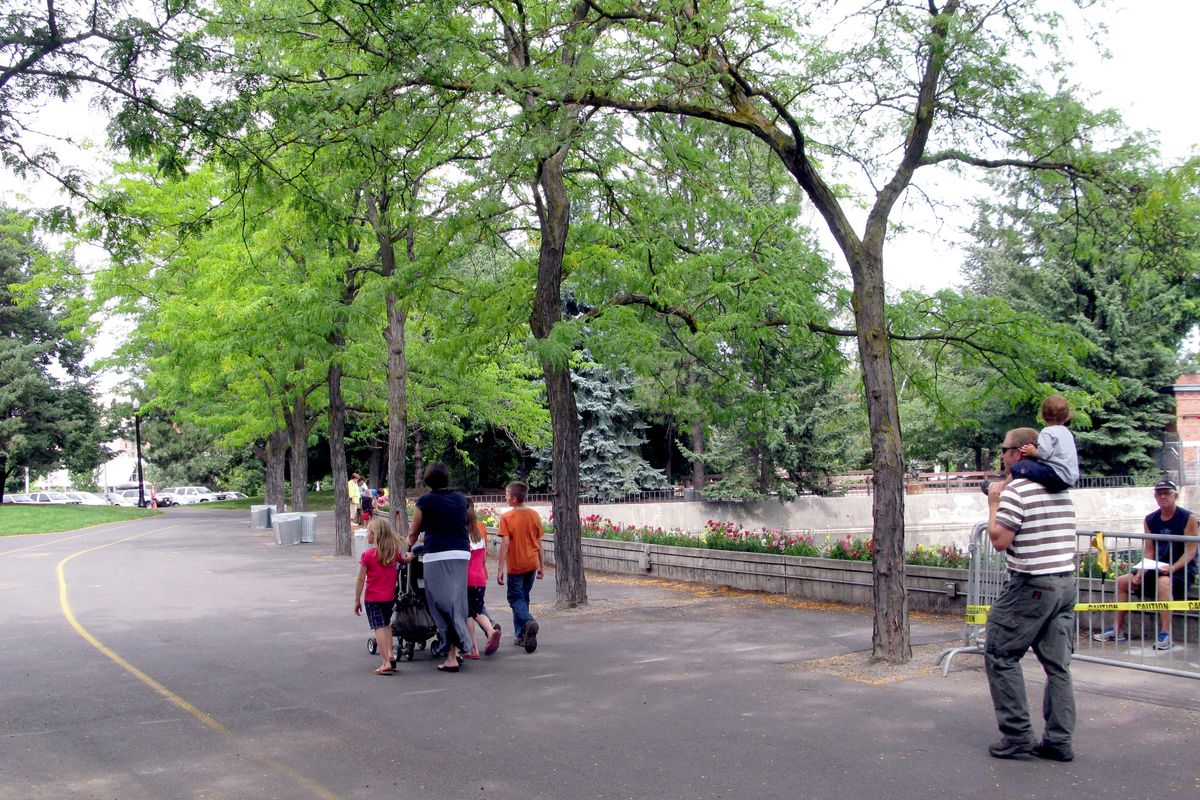Then and Now photos: The mill that built Spokane
May 1945: The Sawmill Phoenix was photographed just months before it was torn down. The mill, at right, was located at 348 N. Wall St., near the Spokane River. It opened in 1871 and supplied lumber to build many of the city’s first homes and businesses.
When S.R. Scranton and J.J. Downing, Spokane’s first white settlers, walked up to the south channel of the river by the falls in 1871, they realized it was the perfect spot for a lumber mill.
The channel had rocky banks for a strong foundation and a swift current that would drive a water wheel. It was at the top of the falls, so hauling was on flat ground. The first mill was a “muley,” a vertical upright saw that moved up and down.
Businessman James Glover, who arrived in 1873, bought out Downing’s share and upgraded the mill to a five-foot circular blade. Ownership passed through the hands of many pioneer businessmen, including A.M. Cannon, J.J. Browne, J.N. Matheney and C.F. Yeaton.
The mill eventually spanned the spillway that powered the mill and the adjacent Washington Water Power Upper Falls power station, which is still operating today. The slack water upstream, known as the mill pond, was for log storage. In the area that is now Riverfront Park, there were several grain mills and laundries owned by S.G. Havermale, Frederick Post and others. Glover built his first store nearby.
The lumber produced over more than 70 years went to build the first settlers’ cabins, then to businesses on the newly platted downtown streets. After Glover’s ownership, the mill operated as Cannon’s Mill, Spokane Falls Lumber, the Sawmill Phoenix and Long Lake Lumber Co.
Washington Water Power eventually bought all the property and buildings, and the mill was torn down in 1945 and the spillway filled in. Wall Street, which once skirted the mill pond, is now a pedestrian sidewalk in Riverfront Park.
–Jesse Tinsley

